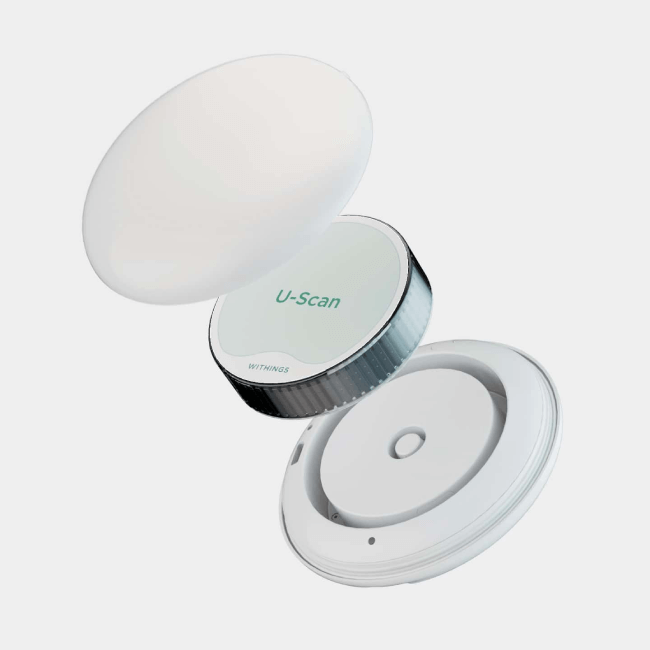Toilet Sensor that Scans Urine: Is this the start of the “Home Hospital”?
Insights | 11-01-2023 | By Robin Mitchell
While urine may be a waste product, it can reveal a lot about human health, but actively trying to monitor its contents is difficult Recently, Withings has announced the development of an active urine sensing system that makes urine tracking hands-free and convenient. What challenges does urine sampling introduce, how does the U-Scan solve these challenges, and is this the start of the “Home Hospital”?
What challenges does urine sampling introduce?
Testing urine samples is one of the many methods medical professionals use to identify problems, whether it is vitamin deficiencies, kidney damage, or digestive problems. In fact, next to blood tests and stool samples, urine samples play a vital role in medical diagnoses, and the lack of needles and simplicity of testing makes it an efficient method. What makes urine testing even more advantageous is that test strips are readily available for personal use, meaning that frequent home testing of urine is possible, and this is especially important for those who suffer from conditions such as diabetes.
But while testing strips are readily available and cheap, their need to be submerged in a urine sample can make testing difficult as a clean urine sample needs to be obtained. Strips cannot be inserted into a toilet as the water from the toilet will dilute and interfere with the result (for example, specific gravity is dependent on the water concentration). Thus, users are required to either urinate directly onto the strip or collect a urine sample which can be messy and thus unhygienic.
Another challenge faced with testing strips is being able to read them reliably. Once a strip has been in contact with urine, it needs to be read against a chart, and reading such charts with a urine-soaked strip isn’t easy. Finally, test strip results are not digital, and this can make recording results difficult and tracking changes over time even more so.
U-Sense brings electronic urine testing home
Recognising the challenges faced with urine testing and the problems that testing strips present, Withings recently announced the development of a new health monitoring sensor that digitises urine testing while making the entire process hands-free.
The sensor is fitted into the toilet bowl (ideally in the forward position), and urine that falls onto the sensor is scanned by the device and data is sent to a server for long-term tracking of key biomarkers. An internal cartridge system and battery enable the sensor to operate for 3 months before a replacement is needed, and the system can identify different users, so it only takes readings from a specific individual.
To make readings, the U-sense has a small inlet channel that draws in liquid, but the combination of temperature and flow detection enables the sensor to distinguish between toilet flushes as well as different users. If the incoming sample isn’t a specific user, the collected sample is ejected, else the sample is then sent to an internal testing pod. Inside this pod, a cartridge filled with testing strips deploys a single strip, reads the results, and then ejects the sample back into the toilet. The data collected from the strips can then be sent to a phone via Wi-Fi, and numerous biomarkers can be monitored.
The company has so far created two main cartridges with different purposes. One cartridge is being targeted at women looking to monitor menstrual cycles by checking for surges of luteinising hormones, while the other cartridge is focused on general well-being, such as ketone and vitamin levels.

Is this the start of the “Home Hospital”?
As the cost of medical care continues to increase, there is a solid case to be made for bringing the power of medical diagnosis and treatment to individuals. Advances in AI will soon allow cloud-based doctors to make a basic diagnosis of patients without needing to interact with a human, and the developments in wearable medical technologies will allow continual medical data to be gathered. Long-term data gathering will be tied into predictive AI systems, which may be able to identify conditions before they worsen, and this will eventually save lives via preventative treatment.
In addition, the move towards outsourced designs (such as ventilators developed by numerous universities during the COVID pandemic) could enable individuals to access their own treatment devices and thus remove reliance on hospitals for some basic treatments. This will be especially important for those vulnerable to secondary infections that commonly plague hospital patients.
Overall, the U-sense demonstrates just how far electronics have come, and the digitisation of medical data will undoubtedly result in an avalanche of advances in the field of medical AI systems.

